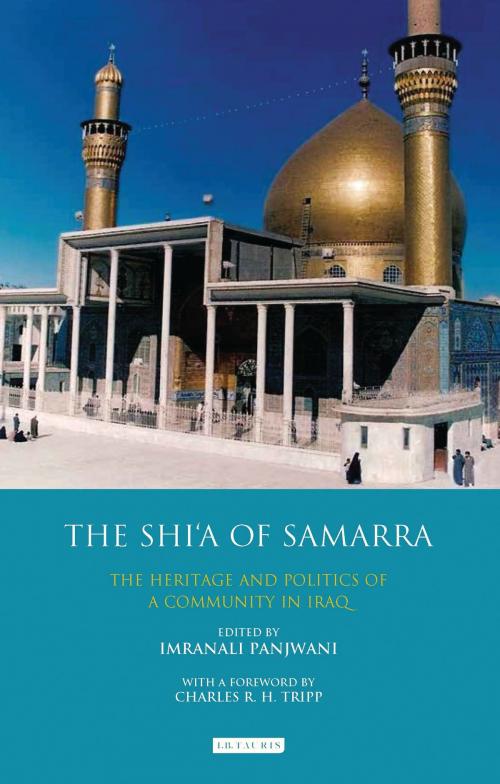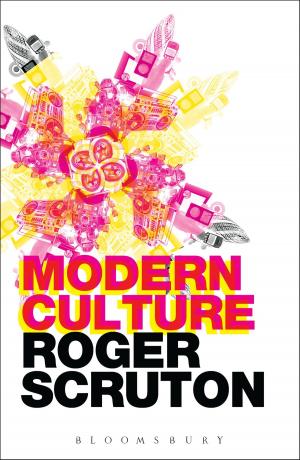The Shi’a of Samarra
The Heritage and Politics of a Community in Iraq
Nonfiction, Art & Architecture, General Art, Art History, Social & Cultural Studies, Social Science, Religion & Spirituality| Author: | ISBN: | 9781786729828 | |
| Publisher: | Bloomsbury Publishing | Publication: | January 30, 2012 |
| Imprint: | I.B. Tauris | Language: | English |
| Author: | |
| ISBN: | 9781786729828 |
| Publisher: | Bloomsbury Publishing |
| Publication: | January 30, 2012 |
| Imprint: | I.B. Tauris |
| Language: | English |
On 22 February 2006, the main dome of the al-Askariyya shrine in Samarra was blown up. In the aftermath, sectarian strife between Shi'i and Sunni communities in Iraq and the wider region resonated around the world. The assault on Samarra, which was built in the period of the Abbasid caliphate in the ninth century CE, therefore came to represent for many a symbol of the destructive civil conflict which engulfed Iraq following the 2003 US-led invasion. The Shi'a of Samarra explores and analyses the cultural, architectural and political heritage of the Shi'a in both Samarra and the Middle East, thus highlighting how this city functions as a microcosm for the contentious issues and debates which remain at the forefront of efforts to rebuild the modern Iraqi state.
From its origins under the eighth Abbasid caliph to its rise as a recognized site for visitation (ziyarat), akin to that of Najaf and Karbala, Samarra in the early period of Islam was a prominent gathering place for Shi'i Muslims. Of particular importance was the presence of the shrines of the tenth and eleventh Imams, and Samarra's status as the last known residence of the twelfth Imam. But upon the return of the Abbasids to their former capital of Baghdad at the end of the ninth century, Samarra's importance declined. Although there were Shi'i Muslims present in Samarra, it was in the late nineteenth century that the city once again became a centre for religious and juridical learning, for the most part due to the presence of the Ayatollah Mirza Hasan Shirazi. Here, the book highlights the cross-border linkages of Shi'i clerics and the impact of their teaching on both the Shi'a and Sunni within the city, and across the Middle East.
Crucially, this volume also examines the history of sectarianism in Samarra: exploring issues of citizenship and identity in Iraq, and - bearing in mind the specific socio-political context of this conflict - analysing the rise of violence between the Shi'a and the Sunni. In the aftermath of the US-led invasion, and the bombings of the main dome in 2006 and the two minarets in 2007, this book also details the efforts at reconstruction that have taken place, providing important insights for students and researchers working on the history and politics of Iraq and the Middle East, as well as those interested in the art and architecture of the Islamic world.
On 22 February 2006, the main dome of the al-Askariyya shrine in Samarra was blown up. In the aftermath, sectarian strife between Shi'i and Sunni communities in Iraq and the wider region resonated around the world. The assault on Samarra, which was built in the period of the Abbasid caliphate in the ninth century CE, therefore came to represent for many a symbol of the destructive civil conflict which engulfed Iraq following the 2003 US-led invasion. The Shi'a of Samarra explores and analyses the cultural, architectural and political heritage of the Shi'a in both Samarra and the Middle East, thus highlighting how this city functions as a microcosm for the contentious issues and debates which remain at the forefront of efforts to rebuild the modern Iraqi state.
From its origins under the eighth Abbasid caliph to its rise as a recognized site for visitation (ziyarat), akin to that of Najaf and Karbala, Samarra in the early period of Islam was a prominent gathering place for Shi'i Muslims. Of particular importance was the presence of the shrines of the tenth and eleventh Imams, and Samarra's status as the last known residence of the twelfth Imam. But upon the return of the Abbasids to their former capital of Baghdad at the end of the ninth century, Samarra's importance declined. Although there were Shi'i Muslims present in Samarra, it was in the late nineteenth century that the city once again became a centre for religious and juridical learning, for the most part due to the presence of the Ayatollah Mirza Hasan Shirazi. Here, the book highlights the cross-border linkages of Shi'i clerics and the impact of their teaching on both the Shi'a and Sunni within the city, and across the Middle East.
Crucially, this volume also examines the history of sectarianism in Samarra: exploring issues of citizenship and identity in Iraq, and - bearing in mind the specific socio-political context of this conflict - analysing the rise of violence between the Shi'a and the Sunni. In the aftermath of the US-led invasion, and the bombings of the main dome in 2006 and the two minarets in 2007, this book also details the efforts at reconstruction that have taken place, providing important insights for students and researchers working on the history and politics of Iraq and the Middle East, as well as those interested in the art and architecture of the Islamic world.















